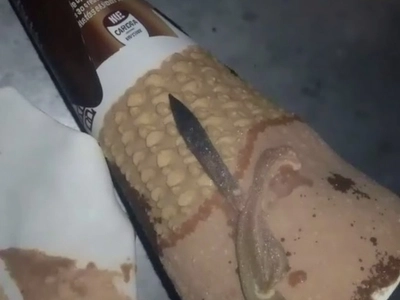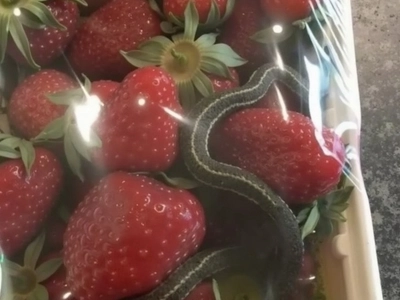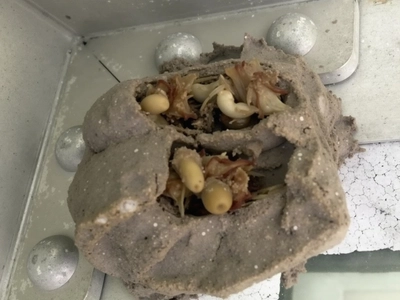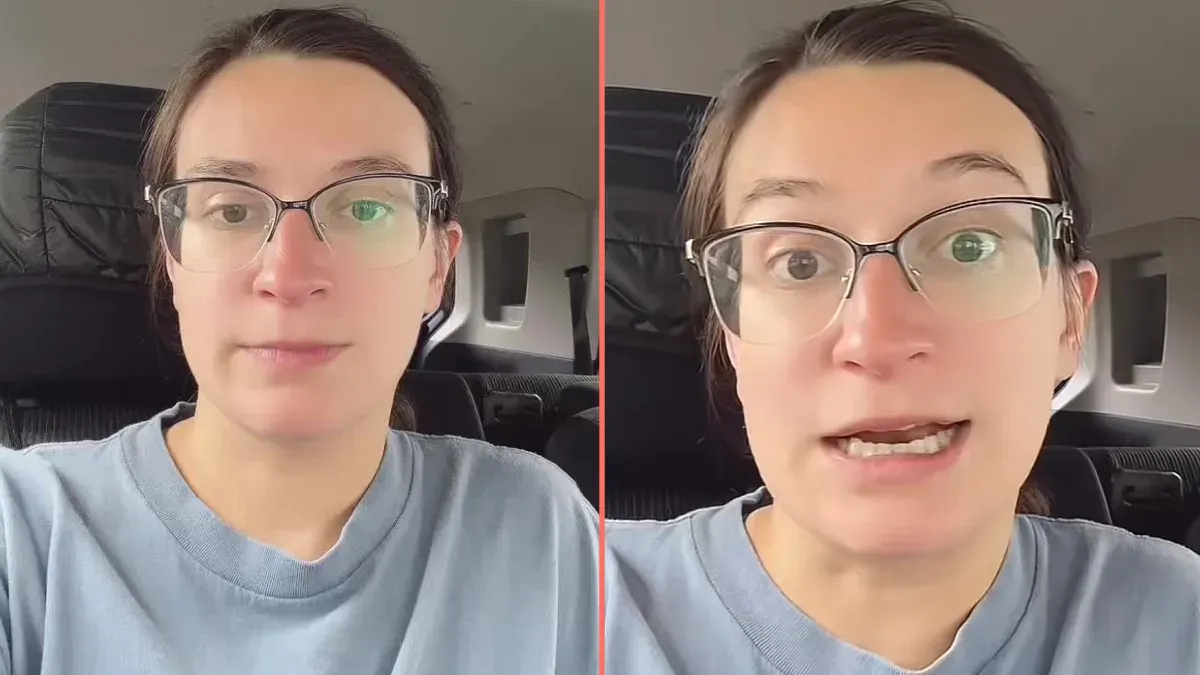My daughter opened a package of chocolate ice cream and found something strange inside: we were surprised to realize what it was
It started like any other ordinary afternoon. My daughter came home from school, tossed her backpack on the couch, and went straight for the freezer. She always did. It had become a small ritual—her little moment of happiness after a long day. She reached for her favorite chocolate ice cream cone, the same brand, the same flavor she’d been eating for months. Just the sight of it made her smile every single time.
She peeled back the wrapper, that satisfying crinkle filling the kitchen, and I could smell the sweet chocolate already. The cone looked perfect—smooth, shiny coating on top, just the way it always was. She took her first bite, crunching into it with a grin. I turned back to the sink, washing a few dishes, not paying much attention, until I heard her small, puzzled voice behind me.
“Mom… look at this.”
I turned around, still holding a wet plate in my hand, and saw her staring down at the ice cream. Her brow was furrowed. I stepped closer. At first glance, it didn’t seem like anything unusual. But then I noticed it too—a dark little lump buried under the surface, just beneath the chocolate. It looked strange, uneven, almost like a burnt piece of caramel or maybe a piece of plastic that had melted into the ice cream.
I told her not to worry. “It’s probably just a bit of chocolate that hardened weirdly,” I said, trying to sound casual. But she was curious. She always is. She dug a bit deeper with her spoon, scraping away the creamy top layer.
And then she screamed.
It wasn’t a loud, theatrical scream—just a short, sharp sound that cut through the quiet kitchen like a blade. My heart jumped. I rushed over, and when I looked at what she had uncovered, I felt a cold, sick twist deep in my stomach.
There, frozen inside the chocolate ice cream, was a tiny creature curled up tightly. It had a thin tail and what looked like two small pincers near its head. I blinked, unable to believe what I was seeing. For a second, my brain tried to make sense of it—maybe it was a piece of nut shell or some strange bit of candy I didn’t recognize. But then the shape became clear, and I realized exactly what it was.
A scorpion.
Small, black, and unmistakably real. Its body was stiff, trapped in the creamy brown layers like an insect in amber. It was dead, thank God, but that didn’t make it any less horrifying.
My daughter dropped the spoon and backed away from the table, her face pale. She looked at me, eyes wide with fear and disgust. I didn’t even know what to say. I just stood there, staring at that cone, my mind racing. How in the world could something like that have gotten inside a sealed ice cream?
I tried to think logically. Maybe it had somehow crawled in during production, before the chocolate was poured in? Factories are supposed to be sterile and automated—how could this happen? Or maybe it had fallen in afterward, before freezing. Either way, it was unthinkable. I felt nauseous just imagining the process.
My daughter’s hands were shaking. She looked like she might cry. “Mom, I ate some of it,” she whispered, her voice trembling. I rushed to comfort her, checking her mouth even though I knew the thing was dead and frozen. Still, I couldn’t help picturing her taking those first few bites, so innocent, so trusting, not knowing what was hidden just below the surface.
I wrapped the cone in a napkin, trying not to look at it too closely, and put it carefully on the counter. Then I grabbed my phone and took pictures—lots of them. Every angle. I wanted proof. My hands were trembling as I typed up a message to the company that made it. I attached the photos and wrote out what had happened, explaining everything in detail. I didn’t sound angry yet. Just shocked. Horrified.
Minutes later, as I sat with my daughter, trying to calm her down, the reality of it all began to sink in. This was something that could have seriously harmed someone. What if it had been alive when she opened it? What if she had bitten into it without realizing? I couldn’t stop those thoughts from spiraling.
The company responded quickly. They asked for the batch number, the store where we bought it, and a few more photos. Their tone was polite, almost clinical, but it didn’t do much to comfort me. I could tell they were trying to sound reassuring, saying they’d investigate and that incidents like this were “extremely rare.” But that didn’t change what we had seen.
That night, my daughter didn’t want dinner. She just sat on the couch, quiet, still shaken. I didn’t blame her. Even I couldn’t stop thinking about it—the image replaying in my mind again and again. That tiny body frozen beneath the chocolate, something so foreign and wrong in a place meant for joy and sweetness.
The next day, I threw away the rest of the ice creams in the freezer. I couldn’t even look at them without feeling a wave of disgust. My daughter said she never wanted ice cream again. I told her that was okay, that maybe we’d stick to homemade desserts for a while. But deep down, I felt this strange sense of loss—not just for the treat itself, but for the small, simple happiness it used to bring her. That carefree routine after school, gone in an instant.
Over the following days, friends and family called after hearing about it. Some were horrified, some skeptical. A few even joked nervously about it, saying things like, “Well, that’s extra protein!” But I couldn’t laugh. Not when I kept picturing that tail.
I kept checking my inbox for updates from the company. Eventually, they sent another email, saying they’d forwarded the case to their quality control department and were “conducting a thorough investigation.” They asked if I could send the actual ice cream for testing. I wrapped it up carefully, sealed it, and shipped it as they instructed. It felt strange mailing something so grotesque, but I wanted answers. I wanted to know how it happened.
Weeks passed. The company never offered a full explanation. They said they couldn’t find any other reports like mine, that the production line was clean, and that their inspection didn’t reveal any contamination. They apologized, offered coupons, even a refund. But none of it mattered. Because what happened in our kitchen that day can’t be undone by a refund.
My daughter still talks about it sometimes. She tells me that when she sees people eating ice cream on TV, she feels her stomach turn. She asks me, “Mom, do you think someone else could find one too?” I tell her I hope not, but honestly, I don’t know. Maybe ours was a one-in-a-million accident. Or maybe it wasn’t.
Since then, I’ve started noticing how easily we trust the things we eat. We open packages, tear into wrappers, scoop up spoons of food without ever questioning what’s really inside. We rely completely on factories, on machines, on strangers we’ll never meet. We assume everything is safe because it looks perfect.
That perfect chocolate shell. That glossy, inviting surface that hides everything underneath.
Now, every time I see an ice cream cone, even in a commercial, I feel uneasy. My mind goes straight back to that afternoon—to the sound of my daughter’s voice saying “Mom, look at this,” and to that tiny frozen body I can’t unsee. It’s amazing how one small thing can change something so ordinary into something you’ll never see the same way again.
Maybe someday, when she’s older, she’ll laugh about it. Maybe it’ll just become a strange story she tells friends—something unbelievable that happened once when she was a kid. But for me, it’s more than that. It’s a reminder of how fragile trust can be, and how a moment of sweetness can turn into shock in a heartbeat.
Now, when I open anything from the freezer, I check twice. I look inside, stir it, inspect it under the light. My daughter teases me for it, saying I’ve become paranoid, but then she’ll smile faintly and say, “Well, you never know, right?”
And she’s right. You never really do.






